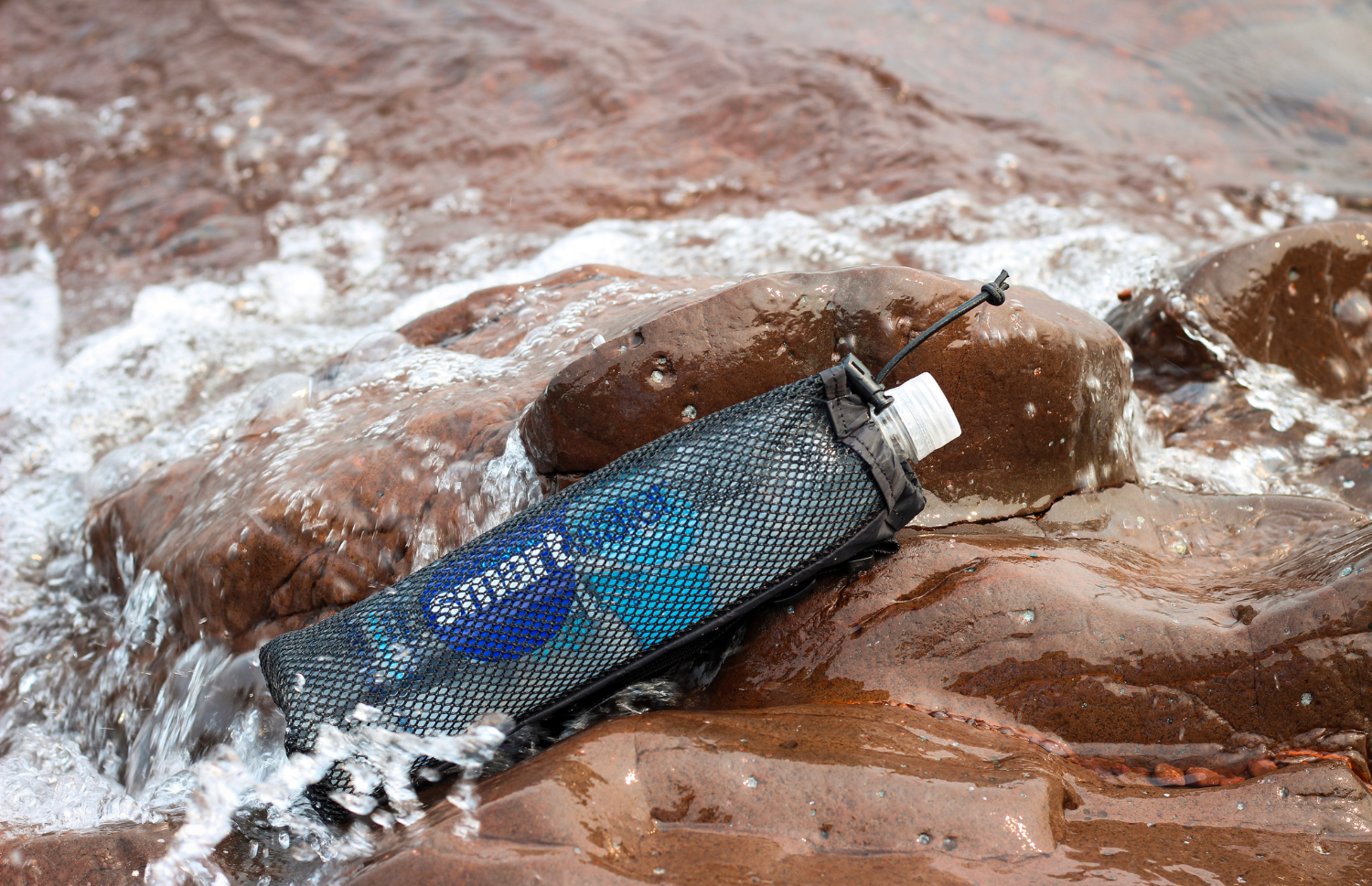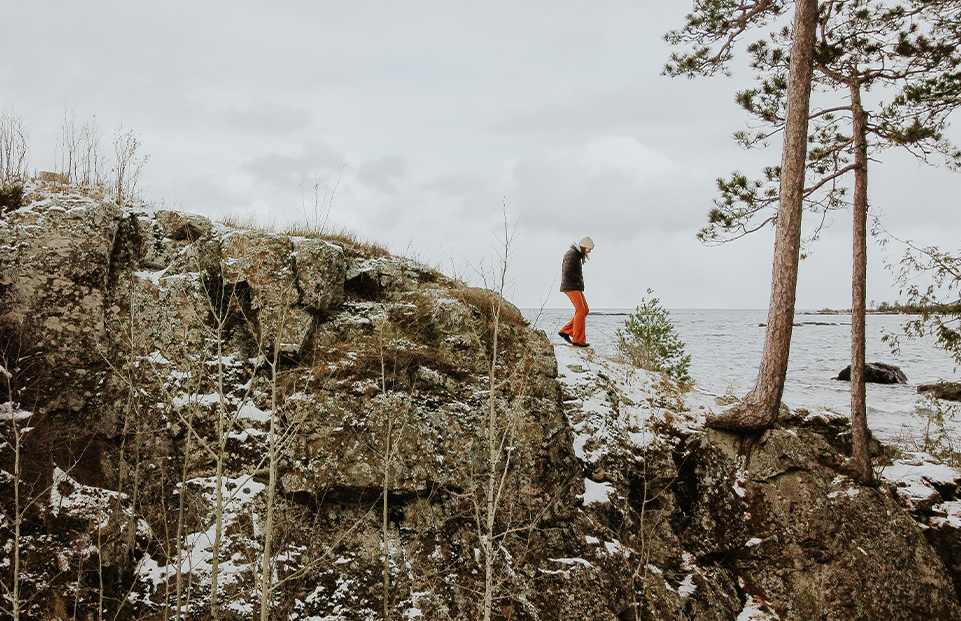Are you drawn to the great outdoors, but find yourself feeling unprepared once you arrive?
You don't want to feel lost before you even begin your hike—or during it, for that matter. To help you enjoy your outdoor adventure with confidence, we've compiled this hiking FAQ. Our hiking experts at CTUG share their insights on hiking safety, appropriate clothing, and the best accessories to bring along for your next journey.
1. What should I bring hiking?
When it comes to day hikes, most of the items you need to bring with you stay the same regardless of the length, terrain, and difficulty. You might need more snacks, more water, or more layers, but you should never have no snacks, water, or extra layers. Also, make sure that you always have the 10 essentials with you when you head out hiking. These are crucial for your safety.
What to Bring:
- Hiking backpack (between 20 to 40 litres for day hikes)
- Weather-appropriate clothing
- Rain jacket or windbreaker
- Trekking poles (optional, but these will save your knees)
- Water (1 litre for every 2 hours of hiking)
- Snacks (as many as you want!)
- Bear spray (if you’re hiking in bear territory)
10 Essentials:
- Navigation (offline map, paper map, GPS device, etc.)
- Headlamp (with extra batteries)
- Sun protection
- First aid (including insect repellent)
- Some way to start a fire
- Knife/gear repair kit
- Emergency shelter
- Extra food
- Extra water
- Extra layers
2. What do I wear when hiking?
Are you eager to hit the trails, but afraid you have nothing to wear? Here are some guiding principles to keep in mind when assembling your hiking outfit:
- Embrace layering. Layering helps regulate your body temperature so you don’t get too hot or too cold. You can also add or subtract layers based on changing weather conditions.
- Choose moisture-wicking fabrics. Polyester, nylon, or merino wool base layers dry fast, so they’re more comfortable and safer. Ever heard the expression, “Cotton kills”? Cotton stays wet, so you’re more prone to getting a chill in cool weather. Nothing screams “I’m new at hiking” more than wearing jeans.
- Plan for unpredictable weather. Don’t trust the weather reports. Weather can change rapidly in the mountains, so you need to be ready for anything. It could be cooler, wetter, snowier, or hotter than predicted. Wear or pack a rain jacket or windbreaker, a warm jacket, and additional layers.
- Appropriate footwear. Leave the flip-flops and sneakers at home. You need sturdy, well-fitting footwear meant for exercise that can handle outdoor terrain. It’s best if they’re already broken in, as well, since angry blisters really bring down the hiking mood. Hiking boots or shoes are your best bet, although many day hikers now prefer trail running shoes.
3. How do I make sure I don’t get lost?
As a beginner hiker, we recommend sticking to decently trafficked and established trails. Do not embark on any trails that require route finding.
You’re unlikely to get lost on a busy, well-maintained trail in good weather. Therefore, not getting lost as a newbie hiker comes down to picking the right trail and arriving as prepared as possible.
First, do your research. Look up the most popular hikes in your area and see how many recent reviews there are on an app like AllTrails. Then, download the trail map for offline use in case you lose service (you can do this on AllTrails or MapsMe) or grab yourself a good, old-fashioned paper map. If you expect to be hiking out of cell service, you can invest in an emergency communication device like the Garmin InReach.
As you hike, check your map whenever the trail seems unclear or if you’re uncertain which way to go. Having your phone accessible makes it easier to check your progress. For easy access, try keeping your phone in CTUG’s Shoulder Strap Phone Pocket.
4. How do I stay safe on the trail?
Most hiking hazards involve weather, going off trail, wildlife, or injury. However, proper preparation can minimize the risk of an accident.
Plan and research potential hikes, paying close attention to the distance, terrain, and any hazards (like exposure). Then, choose a hike within your comfort and skill level. Make sure someone knows where you’re going, when you’re going, and when you expect to be back. If you’re a new hiker, bringing a friend with you is a good idea.
Check what wildlife lives in the area, and learn what to do during an encounter. You should always carry bear spray in bear territories, but leave the bells at home. Bear bells don’t work.
Different animals necessitate different responses. For example: “If it’s brown, lay down. If it’s black, stand up.” Basically, you can scare away a black bear by acting big and aggressive, but that same tactic can get you into trouble with a grizzly. Wildlife encounters are a big topic, so do your research before getting to the hiking trail.
On the day of your hike, stay on the designated trail (and have your offline map handy in case you wander off trail by accident). Pace yourself and take plenty of breaks to hydrate. Dehydration can quickly get you into trouble.
5. What’s the best way to carry water?
Lucky you, we wrote a whole article on that here: How Should I Carry Water While Hiking?
To sum it up, water bottles are the best option. Whether you want a collapsible bottle, rigid reusable bottle, or plastic disposable bottle, it is up to you. Just don’t use a hydration bladder! Not only are those cumbersome to refill, but you also can’t monitor your water consumption because the reservoir is hidden in your bag.
Most hiking backpacks have a water bottle sleeve. Still, it’s usually pretty tough to grab the bottle while your pack is on your back. Our solution? CTUG’s Water Bottle Sleeve that attaches to your shoulder strap for streamlined hydration on the go.
6. Can I bring my dog?
Maybe! It depends on where you’re hiking exactly. Most National Parks do not allow dogs, so you have to leave Rover at home. Fortunately, there are plenty of dog-friendly trails out there. Just remember to keep your furry best friend leashed if you’re hiking in bear areas. Free-roaming dogs can provoke bears, putting both you and your dog at risk.
Hiking is hard work for dogs too, even with four legs. Make sure you bring a collapsible Dog Bowl to keep them hydrated.
Ultralight Hiking Accessories From CTUG
Chicken Tramper Ultralight Gear makes lightweight, durable, and reliable hiking accessories and gear for outdoor adventures. Our gear is made by hikers, for hikers, and we make it right here in America.
For hiking essentials that never compromise on performance, check out CTUG. From ultralight (and custom) hiking backpacks to our best-selling CTUG water bottle sleeves, our gear helps you get more out of your time spent outdoors.
To learn more about our hiking accessories, reach out to Chicken Tramper Ultralight Gear at info@chickentrampergear.com.



